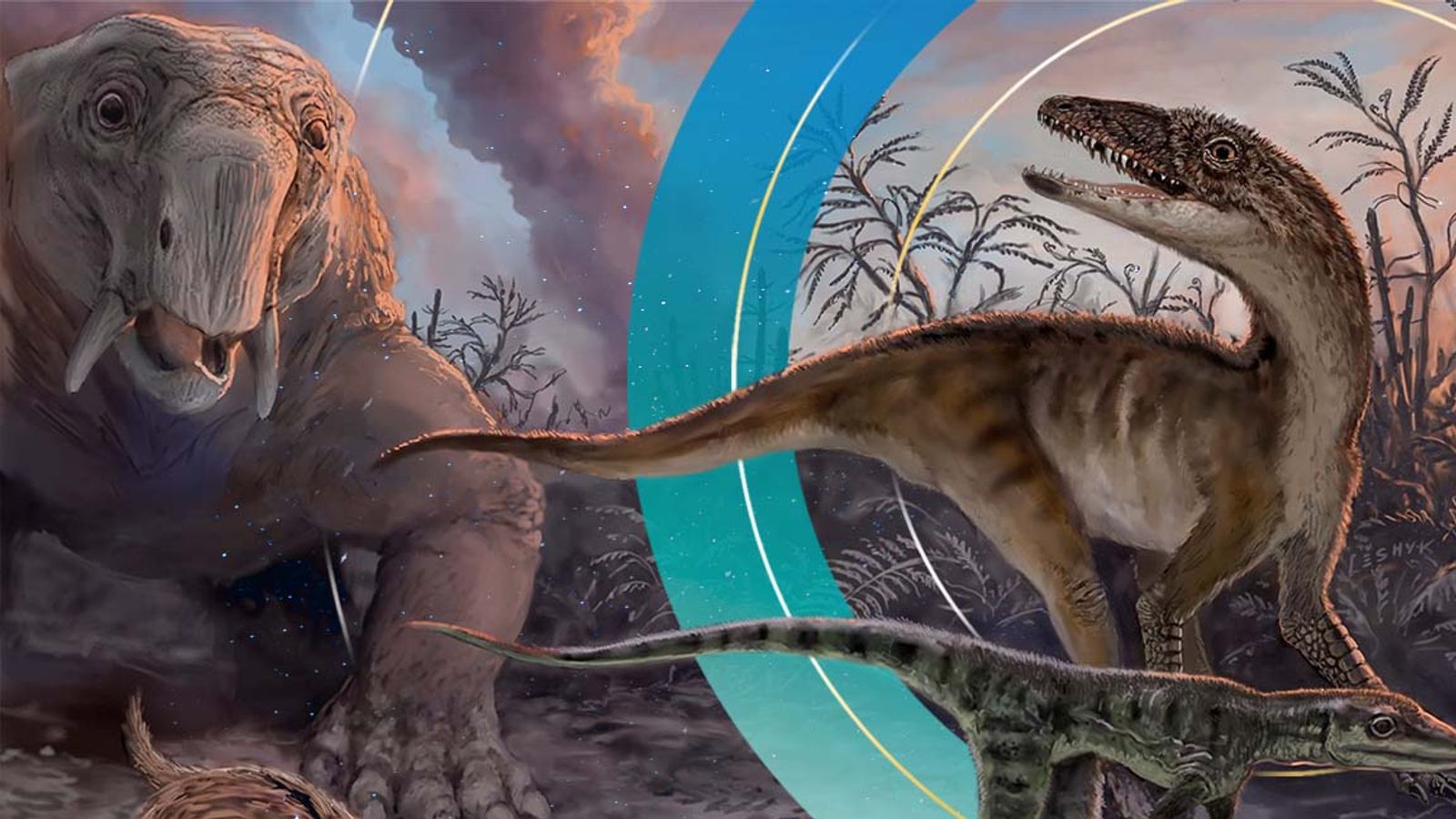Climate change played a key role in the ascendancy of the earliest dinosaurs, according to new research.
Ancestors of the recognisably long-necked diplodocus and brachiosaurus were particular beneficiaries of shifting environmental conditions in the late Triassic and early Jurassic period, some 201 million years ago.
While the transition between the two eras did see a mass extinction event that wiped out many large creatures, some enjoyed the planet’s warming temperatures and expanded into new territories.
The findings by an international team of paleontologists, including Birmingham and Bristol universities in the UK, suggest that it was climate – not competition with other animals – which allowed these dinosaurs to thrive.
“Climate change appears to have been really important in driving the evolution of early dinosaurs,” said co-author Professor Richard Butler, of the University of Birmingham.
He said the next step was to use the same techniques to understand the role of climate in the remainder of the dinosaurs’ time on Earth.
What were those techniques?
Computer models of prehistoric global climate conditions, such as temperature and rainfall, were compared with information about the locations of various dinosaurs at the time.
It showed that the long-necked ancestors, known as sauropods, as well as other similar creatures, with their small heads and long tails, were the runaway success story of an otherwise turbulent period for evolution.
Read more:
Largest-ever land-based predator dino found
Scientists solve mystery of extinction meteorite
Enormous dinosaur skeleton found in back garden
Dr Emma Dunne explained: “What we see in the data suggests that instead of dinosaurs being outcompeted by other large vertebrates, it was variations in climate conditions that were restricting their diversity.
“But once these conditions changed across the Triassic-Jurassic boundary, they were able to flourish.
“The results were somewhat surprising, because it turns out that sauropods were really fussy from the get-go.
“Later in their evolution, they continue to stay in warmer areas and avoid polar regions.”
The research, funded by the Leverhulme Trust and European Research Council, was published in Current Biology.




